
As the food service industry continues to evolve, it is important that the operators take the time to update their knowledge on the latest trends, new and improved kitchen equipment, and innovative technologies that will boost the operation revenues, minimize operation costs, and maximize their profits.

The following common items presented on this page are typically needed in almost all operations whether small or large, but many of these items have new features and benefits that function and perform much more effective and efficient because of new and improved technologies. These information collectively will freshen up the operators knowledge base, and to help them make informed decisions on purchasing.
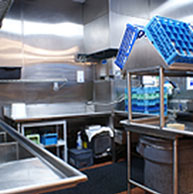
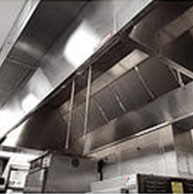
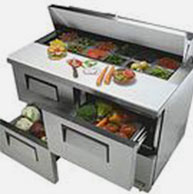
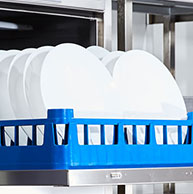

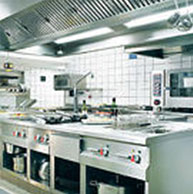


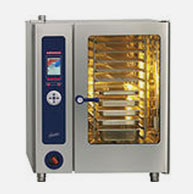
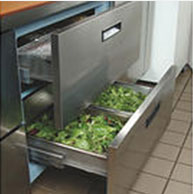
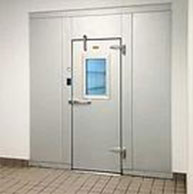
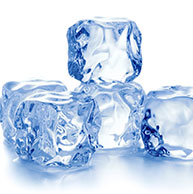
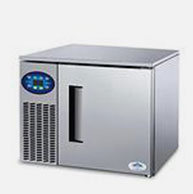
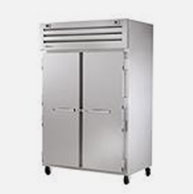
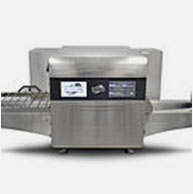
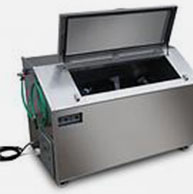
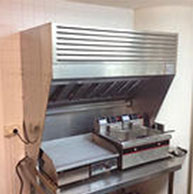
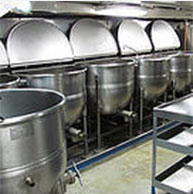
Waste trough is the new feature in warewashing sinks that prevent food from running down and potentially clogging the drain.
For kitchens with limited space or the waterline is not available, mobile handwashing sink carts are the solution to resolve this issue.
Demand Control Ventilation – allows the hood to operate only by leveraging sensor to determine the minimum amount of exhaust air required to capture the heat from the cook line, resulting in energy savings and cost effectiveness.
Self Cleaning Hood – automatically cleans the hood plenum after the day’s cooking is completed.
Many refrigerated prep tables today are Energy Star rated with many options to include: different gauge thickness, overshelves, pot racks, sneeze guards, crumb catchers.
New and improved technology with higher efficiency, green design glycol refrigerated prep tables are becoming more popular.
Direct Vent Dishwash Machine – allows unit to vent directly to the outside.
Ventless Heat Recover Hood Option – removes heat and water vapor at the end of the cycle while recovering the normally exhausted heat and transferring it to the booster.
Pulse brew, bypass & pre-infusion – produces a certain coffee property and maintains it. This new technology ensures consistency.
Satellite system – quietly vibrate to hold heat for extended periods without impacting the quality of coffee.
Brewers with digitally-looped heat control – feature to keep coffee fresh for longer periods.
Coffee brewers with USB ports – pre-program recipes capability.
The most efficient, safer, faster, and more powerful way in commercial cooking for any operators who want to simplify their operations, and not to mention a significant amount of energy savings on the utility bills. The most important feature about induction cooking equipment is that the heating element is much more powerful than gas cooking equipment. In comparison, induction cooking is 84% of energy in electric used gets used to cook whereas 40% less than half of the energy used gets used in gas to cook. Another cool feature; kitchen with induction cooking equipment makes the kitchen cooler and potentially eliminates the exhaust hood system (depending on menu’s complexity) or alternatively, ventless hood system is available to accommodate induction cooking system.
No matter what size your operation or production demands, a cook-chill system offers the following:
Ventless Fryers – with air filtration system, emits no grease or odors, and a built-in fire suppression system. Costs savings on hood system, installation, and maintenance.
Oil conserving fryer models – automatic oil replenishment system that produce more food per gallon of oil, cleaner oil for longer period of time, and conserves energy.
Automated basket lifts models – helps save labor in high volume operations.
Operators could potentially eliminate convection ovens and steamers due to many innovative features, including; self cleaning systems, browning controls to add color to food and smoking capabilities just like real wood chips, and over 200 recipe programability. Some units offer HACCP documentation with or without the use of kitchen management software.
Featuring drawers that can each be independently set to perform one of four cooling functions. Multi-temperature unit provides remarkable flexibility as chef base or equipment stand. Each drawer is completely independent and can be set to operate as a refrigerator, a freezer, a thaw cabinet or even as a convenience chill cabinet.
With government mandates the use of CFC-free insulation to improve energy efficiency. Manufacturers are responding to the requirement by the Federal Energy Independent and Security Act of 2007 with the following features: automatic door closers, strip doors, spring hinge doors, and contain walls, ceiling, and doors with higher insulation rate. Other new technologies include; Bluetooth connectivity, evaporator controls, lighting detector, and temperature monitoring. These features result in high energy savings.
Many ice makers today meet or exceed Energy Star guidelines. To help keep the ice machines clean and in proper working condition, manufacturers used antimicrobial protection technology in plastic food zones to inhibit the growth of of bacteria, mold, mildew, and fungus.
Some ice dispensers feature infrared sensors that dispense predetermined amounts of ice in cup or container, eliminating the need for staff or customers to touch the dispensers.
Designed to quickly bring hot food to storing temperature, maintain food nutrients, and eliminate the hazard of slow cooking. Benefits include; food safety, increased shelf life, food quality, efficiency and productivity, reduced food costs, reduction of product weight loss. Units available in different sizes.
Many reach-in freezer/refrigerator today offer features such as; LED lighting and advance electronic control, digital or dial thermometers, temperature monitoring and alarms, glycol refrigeration in lieu of standard compressor systems. These new design and technology incorporates a 50% reduction in energy consumption.
New and improved technologies of pizza ovens feature:
Several food waste management systems are available: including self-contained food decomposition unit that provide rapid break down of food into reusable bi-products, units that will reduce food waste to grey water (safe for drains and sewers).
These systems mostly apply to larger operations such as schools, hospitals, or hotels. Benefits include: reduced landfill usage, reduced food waste disposal costs, reduced number of collections from site, and can improve your carbon footprint.
Ventless cooking equipment to consider are:
These new and innovative technologies can apply to historic buildings, malls, airports, open kitchens and kitchens with small spaces where ventilation and ducted hoods are not available. These are just a few products among countless new and improved products and brands available for customization.
The advantages of these equipment are energy efficiency, potentially eliminating additional equipment that are not necessary, installation cost, and the units are movable for changing the cook line to accommodate updated menus.
Steam kettles with new and improved technologies:
Insulated steam kettles – reduces heat loss from the bottom and sides of the kettle, which results in lower energy consumption and reduces heat flow into the kitchen.
Thermal Fluid Kettles – This unit circulates the thermal fluid through the jacket instead of steam, significantly increasing the temperature range of the kettle.